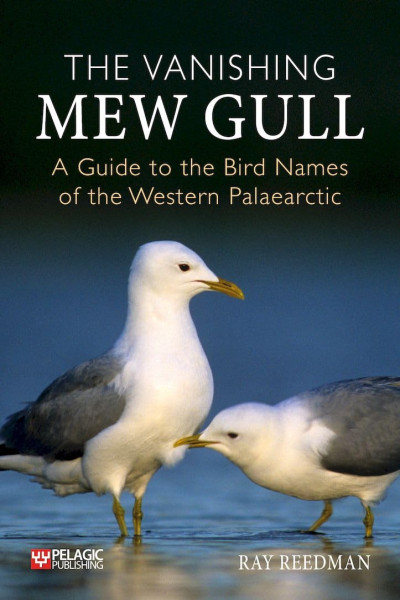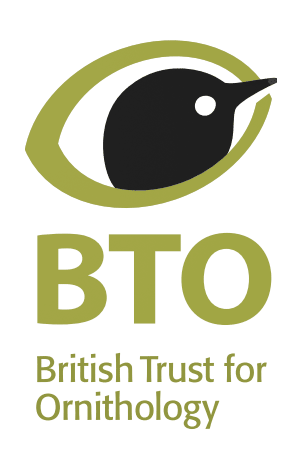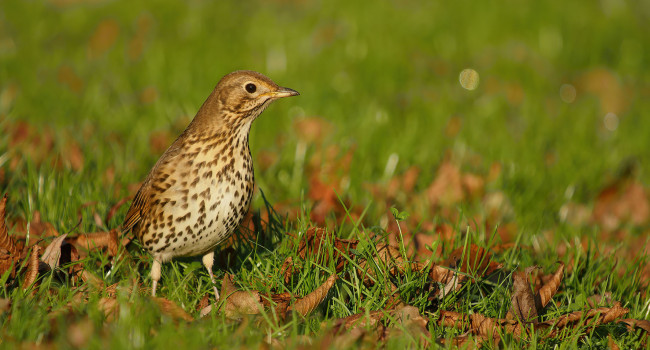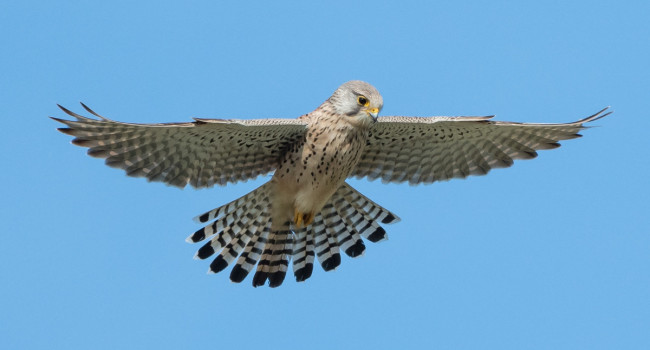
Publisher: Pelagic Publishing, London
Publication Year: 2024
Binding: 2
Page Count: 374
ISBN Number: 9781784274627
Price: £65.00
The Vanishing Mew Gull: A Guide to the Bird Names of the Western Palaearctic
At first glance, this book might appear to be another volume exploring the declines of bird species, as a result of Anthropocene activity. But reading beyond the title, it soon becomes clear that the eponymous gulls are disappearing in name only.
There is currently a great deal of debate surrounding the names of birds, much of which is focused on the controversial announcement by the American Ornithological Society that it will be renaming species which bear names honouring historical figures. Developments in taxonomy too have impacted on scientific and common names as orders, families and species become redefined and renamed in the wake of genetic insights. But bird names have long been the subject of change, for one reason or another, and many birders find this an engaging and fascinating topic.
With so much interest in the nomenclature of birds, Ray Reedman’s latest book provides a timely addition to the genre. Personally, I love these kinds of books, and, like many birdwatchers, I have several titles on my shelves which explore and celebrate the etymology of bird names, both vernacular and scientific. The Vanishing Mew Gull seems to combine the best parts of these existing volumes, also adding to them, providing a very accessible, informative, and genuinely enjoyable read.
The book follows modern taxonomic standard, starting with wildfowl and ending with buntings, followed by a small number of American blackbirds, warblers, and grosbeaks. Each family section is prefaced by a general overview of the origins of the scientific name of the group, followed by individual species accounts. Both scientific and common names are dealt with, and Reedman also treats us to occasional historical names and those found in folklore.
All birds recorded in the Western Palearctic are covered, including such soon-to-be-renamed Nearctic vagrants as Wilson’s Warbler and Swainson’s Thrush. Both widespread and locally common feral species and frequent escapees are also included, for those who like that kind of thing.
While one could sit and read this from cover to cover, for me the beauty of this book lies in its value as a source of frequent reference and as something to simply dip into. Opening the book at random pages, the reader is likely to be met with something that raises an eyebrow, or a smirk, or solicits an involuntary noise that implies “well I didn’t know that.”
For example, I was rather charmed to discover that the name Linnet (and indeed the Linaria component of the bird’s scientific name) is derived from Linum or Flax, a plant whose seeds are favoured by the finch (the second part of its scientific name cannabina, refers similarly to hemp for the same reason). And I was greatly amused, perhaps childishly, to discover that Stercorarius (skuas) means ‘dung eater,’ after the birds’ proclivity for carrion and regurgitated food items.
My only slight gripe was not in the written content but the actual book itself. The ivory-coloured pages and rather old-fashioned layout and monochrome images somehow lend the book a sense of ‘first draft’ rather than completed work. But, that minor aesthetic consideration aside, The Vanishing Mew Gull contains a wealth of information that is certain to educate and entertain anyone with an interest in birds and language.
Book reviewed by Jon Carter
Buy this book




Share this page